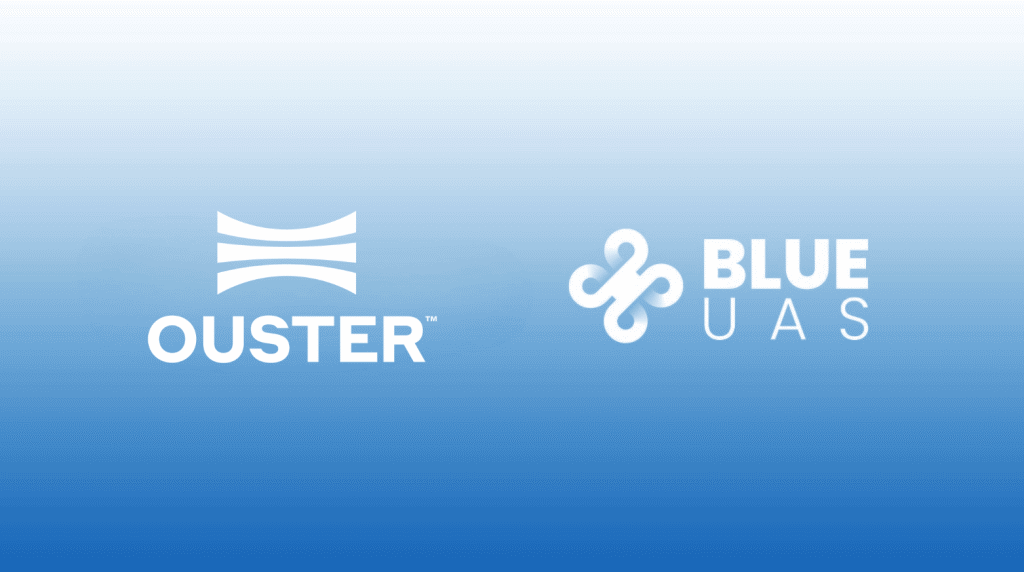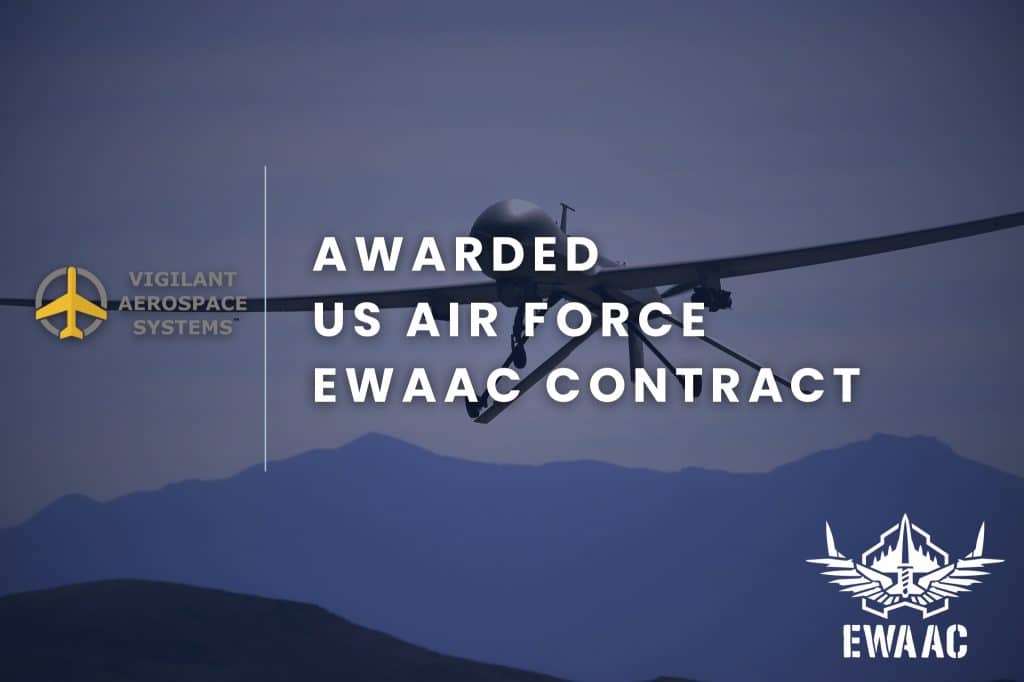The Future of Drones: Exploring GrandSKY’s Ecosystem & Project ULTRA
December 2, 2024 | Dawn Zoldi
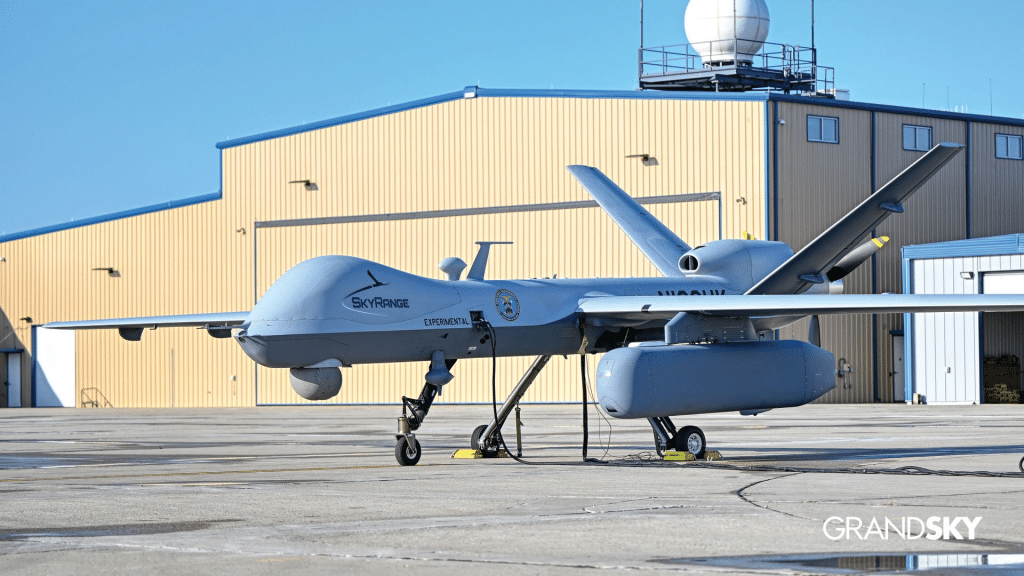
GrandSKY epitomizes the term “Ecosystem” for drones. The nation’s first drone business park co-located on an active U.S. Air Force Base, GrandSKY focuses on drone research, operation and testing. This premier drone flight operations center offers exceptional testing facilities for both military and commercial beyond visual line of sight (BVLOS) flights. In an exclusive interview, Tom Swoyer, the Founder & President of GrandSKY, discusses the ecosystem his team has developed for continuous drone industry advancement, from its partners and infrastructure to its projects, such as Project ULTRA. Discover how you can join this cutting-edge drone community in North Dakota or leverage its exceptional resources for your own drone operations.
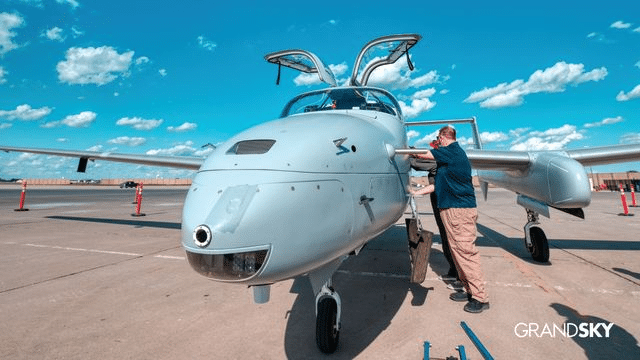
A One-Of-A-Kind Drone Ecosystem: The Genesis of GrandSKY
Dawn Zoldi: Tom, can you tell us a bit about yourself and how GrandSKY came to be?
Tom Swoyer: Sure. I’m the president and developer for GrandSKY in Grand Forks, North Dakota. We started the project back in 2011 as a concept feasibility study. In 2015, we signed all our legal documents. So we’re now in year nine of what is a 50-year development deal with Grand Forks County and the United States Air Force. We focus exclusively on developing drone flight operations capabilities for both military and civilian end users.
Dawn Zoldi: What makes GrandSKY unique in the drone landscape?
Tom Swoyer: What makes us unique is the ecosystem we’ve consciously built. We’ve assembled a group of companies and partners, including state agencies like the Northern Plains UAS Test Site. Our goal is to enable everyone to win here. If you come to GrandSKY or Grand Forks, we plug you in to do what you do best and help make you successful.
Dawn Zoldi: You’re in North Dakota, which has some unique weather conditions. How does this factor into your operations?
Tom Swoyer: Our location offers what we call the true four seasons. We can get up to 100 degrees in summer with 16 hours of daylight. We also have nice cold winters with wind, snow and ice. This allows us to provide cold weather test capabilities, which are crucial for real-world applications of drone technology. It’s important for companies that need to fly nationally or globally to not just fly their drone where it’s nice and sunny all day. They need to be able to operate in places like Grand Forks.
GrandSKY’s Cutting-Edge Infrastructure and Advanced UAS Capabilities
Dawn Zoldi: Can you elaborate on the infrastructure and facilities you have at GrandSKY?
Tom Swoyer:. We have a 12,351-foot runway, uncongested airspace, and year-round flight-testing capabilities, including for BVLOS operations. We also have the MNOC, or the Mission Network Operation Center, operated by the Northern Plains UAS Test Site (NPUASTS). It’s the heart and soul of the Vantis system, which will be an entire statewide BVLOS network that enables ubiquitous flight operations across the state.
Dawn Zoldi: How does this infrastructure support BVLOS operations?
Tom Swoyer: Our BVLOS system is available to anyone who wants to come to GrandSKY and use it. We have over 11,000 square miles of coverage within that BVLOS capability. It’s a huge game-changer that allows companies to fly inexpensively and safely. There are over 40 FAA approved waivers using our BVLOS system for flight operations and our waivers aren’t for a week here or a week there, they are for a year of flight operations.
GrandSKY’s Innovative UAS Ecosystem: Partners Revealed
Dawn Zoldi: You’ve mentioned the ecosystem at GrandSKY a few times. Can you break down who some of the key players are?
Tom Swoyer: Absolutely. Right on our campus we have major defense contractors like Northrop Grumman and General Atomics as anchor tenants. We also have partners like Thales and the NPUASTS who run operations out of GrandSKY. We brought in Innovets, a veteran owned company to run our ground operations and manage the entire site. We also work with TruWeather Solutions and Meteomatics to provide extensive weather forecasts.
Dawn Zoldi: Let’s break down more specifically what each of these partners does that contributes to your holistic ecosystem at GrandSKY.
Tom Swoyer: General Atomics does a tremendous amount of training at GrandSKY, including foreign military sales training. For example, right now, they teach British Air Force pilots how to fly MQ-9B Sky Guardian aircraft. I believe the Japanese may be coming sometime in the future. They also support the Department of Defense’s (DoD) Test Resource Management Center (TRMC) with MQ-9 flights collecting telemetry data, which ultimately will support a hypersonic missile test capability, which will also be at GrandSKY.
Dawn Zoldi: What about Northrop Grumman?
Tom Swoyer: Northrop Grumman is working on converting retired Global Hawks into Range Hawks for the TRMC. They are converting these vehicles into Range Hawks to have a capability to look up for hypersonic missile testing, as well as look-down in a more traditional RQ-4 role. The modifications Northrop is making to these retired Air Force aircraft are going to create a variety of new payload capabilities and therefore a variety of new uses for these aircraft.
Dawn Zoldi: What does Thales do?
Tom Swoyer: Thales provides the technical backbone for our BVLOS system and provides troubleshooting and technical management for the software. We combine a radar feed from the Air Force DASR-11 radar. The Thales TopSky system combines that feed with ADS-B and other sensor feeds into a fused layer tracking cooperative and non-cooperative aircraft in the operational area.
Dawn Zoldi: And the NPUASTS – how do they fit into the bigger picture?
Tom Swoyer: NPUASTS is an incredible partner. They help GrandSKY tenants and partners to obtain FAA waivers for BVLOS and other operational requirements. They contribute to safety and risk management scenarios. They help us define operational areas for specific kinds of tests. They just bring it all – soup to nuts – from airspace authorizations to the waivers to the safety risk management case, to building out and working with the Grand Forks Air Force Base Tower to providing safe operations for everybody.
Dawn Zoldi: Tell us about your academic collaborations.
Tom Swoyer: From time to time, we work with academic institutions like the University of North Dakota (UND) and North Dakota State University (NDSU) on various research projects to apply UAs technologies to real world challenges
Project ULTRA: Advancing DoD Drone Technology At GrandSKY
Dawn Zoldi: Can you tell us about Project ULTRA?
Tom Swoyer: Project ULTRA stands for UAS Logistics, Traffic, Readiness and Autonomy. It’s a five-year contract awarded by the Office of the Undersecretary of Defense (OUSD). The goal of our first and second task orders is to conduct logistics flights between Grand Forks Air Force Base and Cavalier Space Force Station, testing drone AirSpace Integration Systems (ASIS) which used to be known as UAS Traffic Management (UTM) systems in the process. The project will grow to include work around other vital areas like air space integration on military bases and possibly counter-drone capabilities.
Dawn Zoldi: What are some of the milestones and timelines for Project ULTRA?
Tom Swoyer: We have already completed Task Order I of the contract. The initial task was to simulate the 50 logistics flights. Grand Forks Air Force Base to Cavalier Space Force Station, which is about a 50 nautical mile, one way flight. For the next phase, we’re aiming for ten successful round-trip flights, carrying payloads between the two locations, in 2025.
Dawn Zoldi: Who are some of your partners on ULTRA?
Tom Swoyer: We’ve been building a pretty big team. It includes, of course, our primary partners at the NPUASTS. It also includes companies like MTSI and Poi Federal. Through the contract we have partners like AX Enterprizes, Air Force Research Lab, and NASA, which are bringing their extensive capabilities and in particular, their traffic management systems. There are a number of groups that are working with us on this contract. And we are looking for even more partners across the board.
Dawn Zoldi: What makes this project so complex?
Tom Swoyer: Project ULTRA is predicated on how the DoD can use drones like any other aircraft, both on base and off base. That merger of coming from off base to on base and vice versa presents massive challenges with security, cybersecurity, physical security, traffic management and situational awareness. We will be merging a small drone operation with the flight line activity at Grand Forks Air Force Base. And this gets even more exciting for us because 18 B-1 bombers will be temporarily deployed here to Grand Forks starting in January. And we need to figure out how to integrate them into this airspace at the same time. ULTRA is going to involve complicated airspace and complex operations. 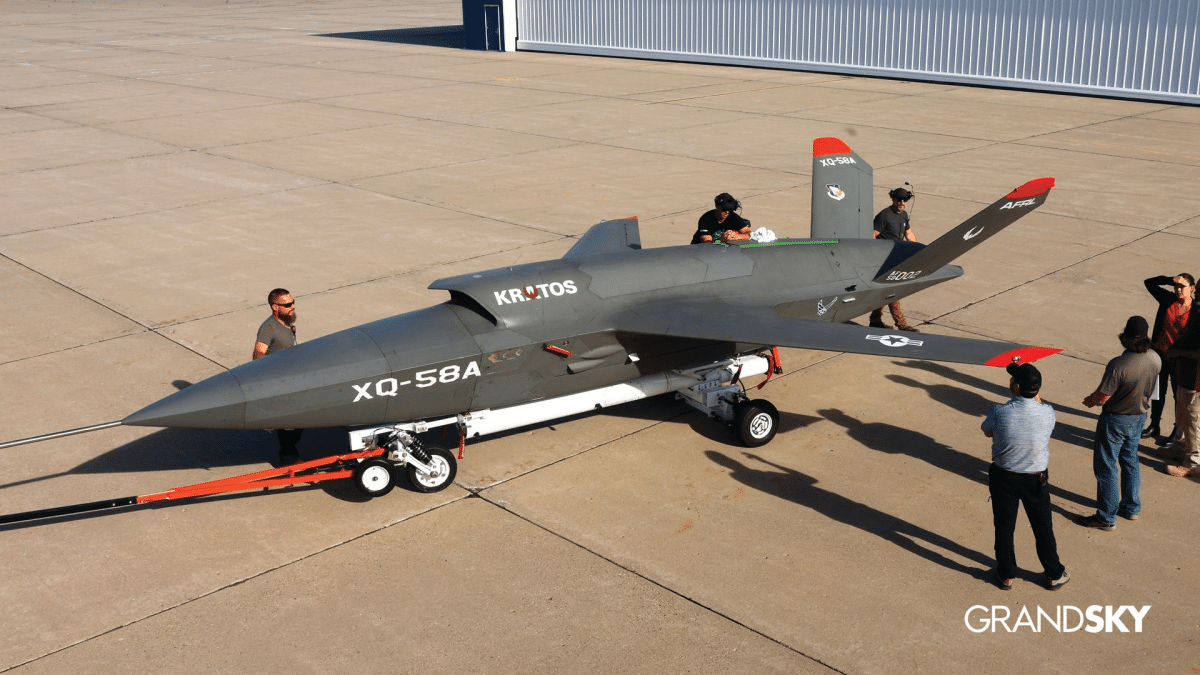
Exploring Opportunities Beyond North Dakota: Expanding Business Globally
Dawn Zoldi: Tom, you’ve expanded your ecosystem beyond North Dakota. Tell us about your work in Battle Creek, Michigan.
Tom Swoyer: We work with Battle Creek Unlimited there. They provide a lot of economic development support to the Kellogg Executive Airport. We’ve been working with them to build out their plan. They are on the verge of purchasing some radars that they are going to use to create a BVLOS volume around that airport.
Battle Creek is a much more densely populated area than Grand Forks. We are helping them build a BVLOS capability in a densely populated area with very complicated airspace. With Detroit not far away, the Chicago approaches come right over that Battle Creek area for O’Hare airport. There’s a lot of complicated airspace there, so we’re working with them to enable those BVLOS operations for logistics, drone as a first responder and similar roles in that airspace.
Their goal is to create economic development around the drone and then be able to support advanced air mobility and corridors around western Michigan, with connections as far as Chicago and Detroit.
Dawn Zoldi: I heard that GrandSKY has also expanded globally. Can you tell us more about those initiatives?
Tom Swoyer: It’s still in the works, but yes, we’re very excited about our potential partnership with Andøya Space in Norway. They’re located at the 70th parallel, which offers unique testing capabilities. They can do over-the-horizon directed energy, electronic warfare, jamming and even kinetic testing. This partnership will allow us to access destructive test capabilities and counter-drone capabilities in a multi-domain environment – underwater, surface of the water, land, and air.
Dawn Zoldi: So, not to put too fine a point on it, but you and your team at GrandSKY can export your expertise almost anywhere to help drone and AAM communities succeed?
Tom Swoyer: Absolutely.
Future Developments, Strategic Partnerships & Opportunities at Grand Sky
Dawn Zoldi: Looking ahead to next year, what do you hope to achieve?
Tom Swoyer: In addition to those 10 flights for Project ULTRA, we also anticipate growth in our ecosystem. The Sky Range program with TRMC will become operational at GrandSKY, and we expect to see the first Range Hawk from Northrop Grumman become operational. We’re also excited about working with Andøya Space in Norway, which I just mentioned.
Dawn: How can companies or individuals get involved with GrandSKY?
Tom Swoyer: The easiest way is to reach out through our website. If someone is interested in doing flight work in Michigan, we can connect them with our partners in Battle Creek. For those with counter-drone technology, logistics technology or air traffic management technologies, we can plug them into Project ULTRA.
We also have a program for startups where we provide access to our assets in North Dakota and at GrandSKY at a very low cost. This includes office space in downtown Grand Forks at the Hive, access to our BVLOS system and other support. We want to encourage startups and small businesses to come and use these resources to conduct demonstrations and tests in front of potential customers.
Dawn Zoldi: Tom, as we wrap up, what final thoughts would you like to share with our readers?
Tom Swoyer: I’d like to emphasize that at GrandSKY, we’re not just about drone research. We’re about making drone operations routine and repeatable. We want to be the place where companies can come to demonstrate and test their technologies in front of potential customers. Whether you’re a large defense contractor or a small startup, we have the resources and partnerships to help you succeed in the drone industry.
Watch Tom Swoyer on the Dawn of Autonomy podcast: https://www.youtube.com/watch?v=Y3C6mdiMVFI
Watch the World Premiere of Project ULTRA: https://www.youtube.com/watch?v=W8GNI8KNROk
